Wir benötigen Ihre Einwilligung zur Verwendung der einzelnen Daten, damit Sie unter anderem Informationen zu Ihren Interessen einsehen können. Klicken Sie auf "OK", um Ihre Zustimmung zu erteilen.
ASTM D6185-11
Standard Practice for Evaluating Compatibility of Binary Mixtures of Lubricating Greases
Automatische name übersetzung:
Standard Praxis zur Beurteilung der Verträglichkeit Binäre Mischungen von Schmierfette
NORM herausgegeben am 1.7.2011
Informationen über die Norm:
Bezeichnung normen: ASTM D6185-11
Anmerkung: UNGÜLTIG
Ausgabedatum normen: 1.7.2011
SKU: NS-34136
Zahl der Seiten: 9
Gewicht ca.: 27 g (0.06 Pfund)
Land: Amerikanische technische Norm
Kategorie: Technische Normen ASTM
Kategorie - ähnliche Normen:
Die Annotation des Normtextes ASTM D6185-11 :
Keywords:
binary mixtures, compatibility, incompatibility, lubricating grease, mixtures, Binary mixtures, Compatibility--petroleum products, Composition analysis--petroleum products, Incompatibility, Lubricating grease, ICS Number Code 75.100 (Lubricants, industrial oils and related products)
Ergänzende Informationen
| Significance and Use | ||||||||||||||||||||||||||||||||||||||||||||||||||||||||||
|
The compatibility of greases can be important for users of grease-lubricated equipment. It is well known that the mixing of two greases can produce a substance markedly inferior to either of its constituent materials. One or more of the following can occur. A mixture of incompatible greases most often softens, sometimes excessively. Occasionally, it can harden. In extreme cases, the thickener and liquid lubricant will completely separate. Bleeding can be so severe that the mixed grease will run out of an operating bearing. Excessive syneresis can occur, forming pools of liquid lubricant separated from the grease. Dropping points can be reduced to the extent that grease or separated oil runs out of bearings at elevated operating temperatures. Such events can lead to catastrophic lubrication failures. Because of such occurrences, equipment manufacturers recommend completely cleaning the grease from equipment before installing a different grease. Service recommendations for grease-lubricated equipment frequently specify the caveat–do not mix greases under any circumstances. Despite this admonition, grease mixing will occur and, at times, cannot be avoided. In such instances, it would be useful to know whether the mixing of two greases could lead to inadequate lubrication with disastrous consequences. Equipment users most often do not have the resources to evaluate grease compatibility and must rely on their suppliers. Mixing of greases is a highly imprudent practice. Grease and equipment manufacturers alike recognize such practices will occur despite all warnings to the contrary. Thus, both users and suppliers have a need to know the compatibility characteristics of the greases in question. There are two approaches to evaluating the compatibility of grease mixtures. One is to determine whether such mixtures meet the same specification requirements as the constituent components. This approach is not addressed by this practice. Instead, this practice takes a specification-independent approach; it describes the evaluation of compatibility on a relative basis using specific test methods. Three test methods are used because fewer are not sufficiently definitive. For example, in one study, using 100 000-stroke worked penetration for evaluation, 62 % of the mixtures were judged to be compatible. In a high-temperature storage stability study, covering a broader spectrum of grease types, only one-third of the mixtures were compatible. These studies used different criteria to judge compatibility. Compatibility cannot be predicted with certainty from foreknowledge of grease composition. Generally, greases having the same or similar thickener types will be compatible. Uncommonly, even greases of the same type, although normally compatible when mixed, can be incompatible because of incompatible additive treatments. Thus, compatibility needs to be judged on a case-by-case basis. Two constituent greases are blended in specific ratios. A 50:50 mixture simulates a ratio that might be experienced when one grease (Grease A) is installed in a bearing containing a previously installed, different grease (Grease B), and no attempt is made to flush out Grease B with Grease A. The 10:90 and 90:10 ratios are intended to simulate ratios that might occur when attempts are made to flush out Grease B with Grease A. Note 1—Some companies evaluate 25:75 and 75:25 ratio mixtures instead of 10:90 and 90:10 ratio mixtures. But, the latter two ratios, which are prescribed by this practice, are considered more representative of the flushing practice described in 5.3. Incompatibility is most often revealed by the evaluation of 50:50 mixtures. However, in some instances 50:50 mixtures are compatible and more dilute ratios are incompatible. (See Appendix X1 and Meade. ) Compatibility information can be used in product information literature supplied with specific greases. It can be used also in literature describing lubrication practices and equipment maintenance. |
||||||||||||||||||||||||||||||||||||||||||||||||||||||||||
| 1. Scope | ||||||||||||||||||||||||||||||||||||||||||||||||||||||||||
|
1.1 This practice covers a protocol for evaluating the compatibility of one or three binary mixtures of lubricating greases by comparing their properties or performance relative to those of the neat greases comprising the mixture. 1.2 Three properties are evaluated in a primary testing protocol using standard test methods: (1) dropping point by Test Method D566 (or Test Method D2265); (2) shear stability by Test Methods D217, 100 000–stroke worked penetration; and (3) storage stability at elevated-temperature by change in 60-stroke penetration (Test Method D217). For compatible mixtures (those passing all primary testing), a secondary (nonmandatory) testing scheme is suggested when circumstances indicate the need for additional testing. 1.3 Sequential or concurrent testing is continued until the first failure. If any mixture fails any of the primary tests, the greases are incompatible. If all mixtures pass the three primary tests, the greases are considered compatible. 1.4 This practice applies only to lubricating greases having characteristics suitable for evaluation by the suggested test methods. If the scope of a specific test method limits testing to those greases within a specified range of properties, greases outside that range cannot be tested for compatibility by that test method. An exception to this would be when the tested property of the neat, constituent greases is within the specified range, but the tested property of a mixture is outside the range because of incompatibility. 1.5 This practice does not purport to cover all test methods that could be employed. 1.6 The values stated in SI units are to be regarded as standard. No other units of measurement are included in this standard. 1.7 This standard does not purport to address all the safety concerns, if any, associated with its use. It is the responsibility of the user of this standard to establish appropriate safety and practices and determine the applicability of regulatory limitations prior to use. For specific safety information, see 7.2.3. |
||||||||||||||||||||||||||||||||||||||||||||||||||||||||||
| 2. Referenced Documents | ||||||||||||||||||||||||||||||||||||||||||||||||||||||||||
|
Ähnliche Normen:
Historisch
15.6.2013
Historisch
1.5.2010
Historisch
1.10.2011
Historisch
1.10.2013
Historisch
1.5.2010
Historisch
1.12.2012
Empfehlungen:
Aktualisierung der technischen Normen
Wollen Sie sich sicher sein, dass Sie nur die gültigen technischen Normen verwenden?
Wir bieten Ihnen eine Lösung, die Ihnen eine Monatsübersicht über die Aktualität der von Ihnen angewandten Normen sicher stellt.
Brauchen Sie mehr Informationen? Sehen Sie sich diese Seite an.


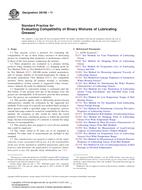
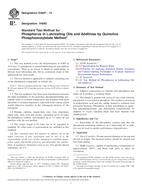 ASTM D4047-13
ASTM D4047-13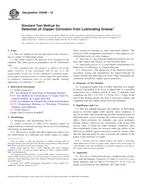 ASTM D4048-10
ASTM D4048-10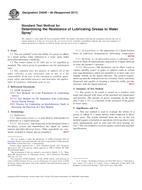 ASTM D4049-06(2011)..
ASTM D4049-06(2011)..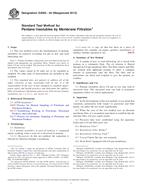 ASTM D4055-04(2013)..
ASTM D4055-04(2013)..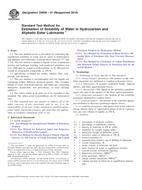 ASTM D4056-01(2010)..
ASTM D4056-01(2010).. ASTM D4057-12
ASTM D4057-12
 Cookies
Cookies
